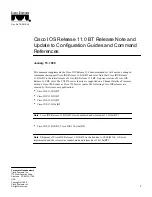
Chapter 1
22
Not all of the eStore interactions are used in this tutorial, so be sure to check for
what’s available when you develop your own online store and want to customize it
with advanced features. Also, check the DrumNotes for examples of how to use
many of these interactions.
If you are new to Drumbeat, you can quickly familiarize yourself with the way
interactions are used in the Quick Start Tutorial. For more detailed information,
see Chapter 17 in the Drumbeat User’s Guide.
Note:
The eStore Builder contracts are not exportable like other contracts in Drumbeat.
For information about Interactions, check the index of the Drumbeat User’s
Guide or Help for the words in bold.
Moving Forward
The typical flow of an e-commerce site consists of searching, browsing, adding
items to a shopping cart and checking out. Typically a search page leads to a
results page with links to product details. From the detail page shoppers can add
items to the Shopping Cart. They can then choose to continue shopping (return
to searching or browsing) or check out.
Shoppers also need the flexibility to add items to the cart, remove items, or change
the order (such as change the quantity). In the final phase of checkout, the items
are inserted into an orders database.
The processes you will go through in building the Quick Store are:
Add the Shopping Cart to the product pages
Configure the Shopping Cart management (add to, update and clear cart
functions)
Calculate the order totals and insert order into the database
Create secure login and checkout pages
Set up the order confirmation page
Summary of Contents for DRUMBEAT 2000 ECOMMERCE EDITION
Page 1: ...Users Guide macromedia DRUMBEAT 2000 eCOMMERCE EDITION ...
Page 6: ...Contents 6 ...
Page 12: ...Introduction 12 ...
Page 90: ...Chapter 2 90 ...
Page 110: ...Chapter 3 110 ...
Page 124: ...Chapter 5 124 ...
Page 142: ...Chapter 7 142 ...
Page 152: ...Chapter 8 152 ...
Page 236: ...Chapter 10 236 ...
















































